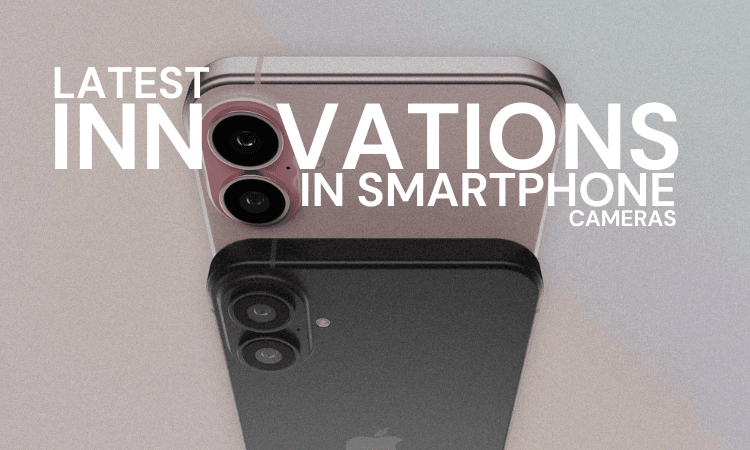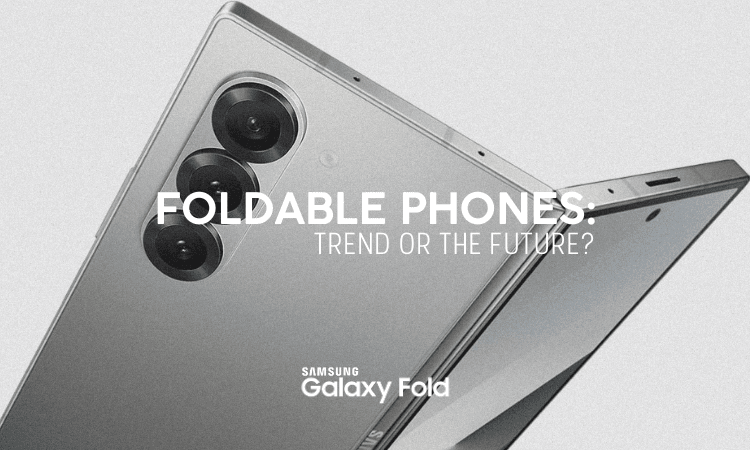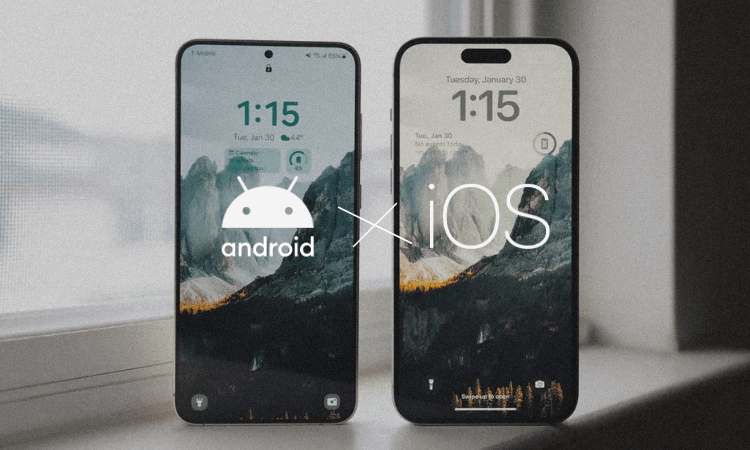When it comes to choosing a camera, two types often dominate the discussion: DSLR (Digital Single-Lens Reflex) and mirrorless cameras. Both offer excellent image quality, performance, and features but cater to different needs. Understanding the strengths and weaknesses of each will help you decide which is best for your photography or videography needs. In this article, we will compare two popular models: the Canon EOS 90D (DSLR) and the Sony Alpha a6400 (Mirrorless). Whether you’re a beginner or a professional, we’ll guide you through the key differences between these two camera types and help you make an informed choice.
DSLR Cameras
DSLR cameras are known for their robust build and traditional design, offering a more classic photography experience. They have been the go-to choice for photographers for many years, especially professionals. Despite the rise of mirrorless cameras, DSLRs remain a strong contender due to their performance and reliability.
What is a DSLR Camera?
A DSLR camera is a type of digital camera that uses a mirror mechanism to reflect light from the lens up into an optical viewfinder. The mirror flips up when you take a picture, allowing light to reach the image sensor.
A DSLR offers a traditional experience with an optical viewfinder, which provides a real-time, direct view of the scene through the lens.
Key Features of DSLR Cameras
- Optical Viewfinder: This allows you to see exactly what the camera lens sees with no delay. It’s perfect for fast-paced photography.
- Larger Size and Weight: DSLR cameras are generally bigger and heavier, which some photographers prefer for better handling, especially with larger lenses.
- Longer Battery Life: Due to their design, DSLRs tend to have much longer battery life compared to mirrorless cameras, making them a better option for long shoots.
Example Product: Canon EOS 90D
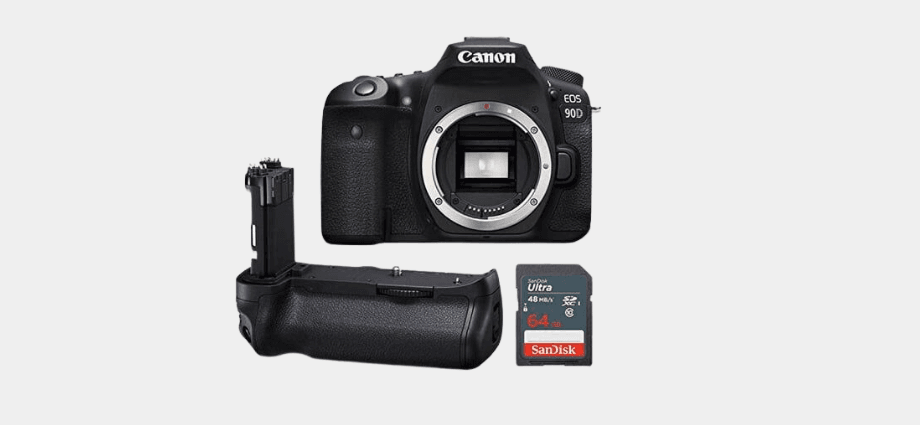
The Canon EOS 90D is a versatile DSLR that combines advanced features with ease of use. With a 32.5-megapixel APS-C sensor and 10 fps continuous shooting speed, it offers excellent image quality and fast performance. It’s a great option for photographers who need a dependable, full-featured DSLR.
- Pros: Reliable autofocus, longer battery life, superior lens selection.
- Cons: Heavier and bulkier than mirrorless cameras, slower live view autofocus.
Mirrorless Cameras
Mirrorless cameras are a newer technology, quickly gaining popularity due to their advanced features and compact designs. These cameras are known for being lightweight and smaller, making them a convenient option for travel photographers, vloggers, and content creators who require portability.
What is a Mirrorless Camera?
Mirrorless cameras, as the name suggests, do not use a mirror to reflect light. Instead, light passes directly to the image sensor, which then sends the live image to an electronic viewfinder or display screen. This design allows for a more compact and lightweight camera body.
Mirrorless cameras have become more popular due to their cutting-edge technology and portability, especially for videographers and content creators who need a compact setup.
Key Features of Mirrorless Cameras
- Electronic Viewfinder or No Viewfinder: The image is displayed digitally, which may introduce a slight delay. However, some advanced models have near-zero lag.
- Compact Size and Lightweight: Without the mirror mechanism, mirrorless cameras are smaller and easier to carry, making them ideal for travel and everyday use.
- Shorter Battery Life: Due to the use of the electronic viewfinder and continuous live feed from the sensor, battery life tends to be shorter than DSLR cameras.
Example Product: Sony Alpha a6400
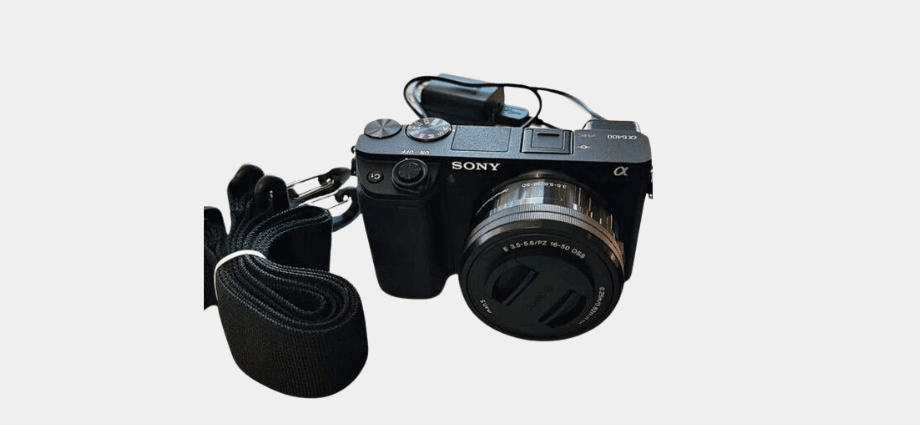
The Sony Alpha a6400 is a leading mirrorless camera that features a 24.2-megapixel APS-C sensor and an impressive 425-point phase-detection autofocus system. It’s known for its compact body and rapid shooting capabilities, making it ideal for both stills and video.
- Pros: Fast autofocus, compact design, great for video.
- Cons: Shorter battery life, fewer lens options compared to DSLR.
Comparing DSLR and Mirrorless Cameras
When comparing DSLRs and mirrorless cameras, it’s essential to consider several factors: image quality, speed, size, battery life, and usability. Both types of cameras offer impressive features, but depending on your needs, one may stand out more than the other.
Image Quality
Both DSLR and mirrorless cameras can produce high-quality images, but the sensor plays a huge role in determining the final result. The Canon EOS 90D and the Sony Alpha a6400 both feature APS-C sensors, which offer excellent image quality with good color accuracy and sharpness. However, mirrorless cameras like the Sony Alpha a6400 often have better performance in video quality, thanks to their advanced autofocus and better video features.
DSLRs tend to have slightly better noise control at higher ISOs, but modern mirrorless models are catching up rapidly. Both types are suitable for professional-quality work, but mirrorless may have the edge for videography.
Autofocus and Speed
The Canon EOS 90D features an excellent autofocus system, especially in live view and video. However, it doesn’t match the speed of mirrorless cameras, which can focus more quickly and accurately due to the direct sensor feedback.
The Sony Alpha a6400 offers 425 phase-detection points and exceptional tracking abilities, making it the better option for action shots, sports, and video.
Ease of Use
DSLR cameras offer a more traditional, tactile feel. The Canon EOS 90D has a robust and user-friendly design, ideal for those who prefer physical dials and buttons. In contrast, the Sony Alpha a6400 is smaller and relies more on touch screens and electronic controls. This makes mirrorless cameras better for those who prefer a minimalist design, but it may be harder for beginners to adjust to the lack of physical buttons.
Size and Weight
One of the most significant differences between these two camera types is the size and weight. DSLRs, like the Canon EOS 90D, are bulky and can be heavy, especially with larger lenses. On the other hand, mirrorless cameras like the Sony Alpha a6400 are much smaller and lighter, making them easier to carry around for extended periods. This makes mirrorless cameras ideal for travel photographers and vloggers who need something portable.
Battery Life
Battery life is one of the main advantages of DSLRs. The Canon EOS 90D can last for around 1,300 shots per charge, whereas the Sony Alpha a6400 lasts around 410 shots. The electronic viewfinder in mirrorless cameras consumes more power, leading to a much shorter battery life.
Pros and Cons of Each Camera Type
Advantages of DSLR Cameras
- Longer Battery Life: Due to the optical viewfinder and less reliance on digital displays, DSLRs can last significantly longer between charges.
- Larger Selection of Lenses: DSLRs, especially from brands like Canon and Nikon, have been around longer and thus have a wider variety of lenses available.
- Better Handling: The larger size and weight can offer a more stable grip, especially with longer lenses.
Disadvantages of DSLR Cameras
- Bulky and Heavy: The mirror system and larger body make DSLRs harder to carry around for long periods.
- Slower Autofocus: While DSLR autofocus is excellent for still photography, it tends to lag behind mirrorless cameras in video and live view modes.
Advantages of Mirrorless Cameras
- Compact and Lightweight: Mirrorless cameras are typically smaller and lighter, making them a better choice for on-the-go photography or travel.
- Faster Autofocus: Many mirrorless cameras, such as the Sony Alpha a6400, have superior autofocus performance, especially in video and tracking subjects.
- Great for Video: The continuous autofocus and high-quality video features make mirrorless cameras an excellent choice for vloggers and filmmakers.
Disadvantages of Mirrorless Cameras
- Shorter Battery Life: The need for continuous sensor use leads to quicker battery drain.
- Fewer Lens Options: While the lens selection for mirrorless cameras is growing, it still doesn’t match the vast collection available for DSLRs.
Which Camera is Right for You?
Choosing between a DSLR and a mirrorless camera ultimately depends on your needs. If you prefer a traditional, more hands-on approach with long battery life and a vast selection of lenses, a DSLR like the Canon EOS 90D might be the right choice. It’s great for photographers who focus on stills and need a reliable work horse.
On the other hand, if you need something compact, lightweight, and quick, especially for video or action shots, a mirrorless camera like the Sony Alpha a6400 would be ideal. It offers superior autofocus, video capabilities, and portability, making it perfect for content creators.
Conclusion
Both DSLR and mirrorless cameras offer excellent features and image quality, but they serve different purposes. If you value portability, speed, and video performance, mirrorless might be your best option. If you need longer battery life, better lens options, and prefer a traditional camera experience, go for a DSLR. Understanding your specific needs will help you make the right decision for your photography journey.
